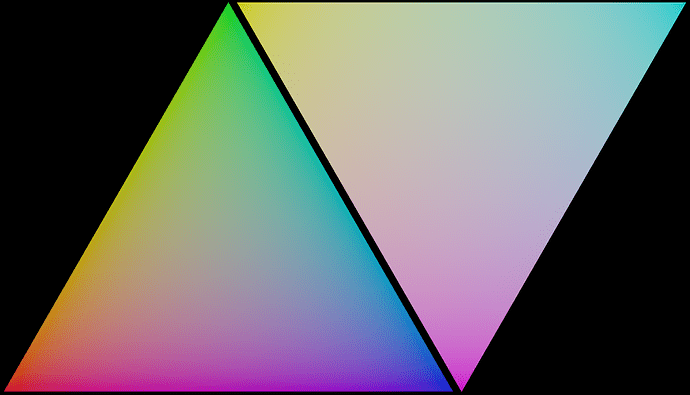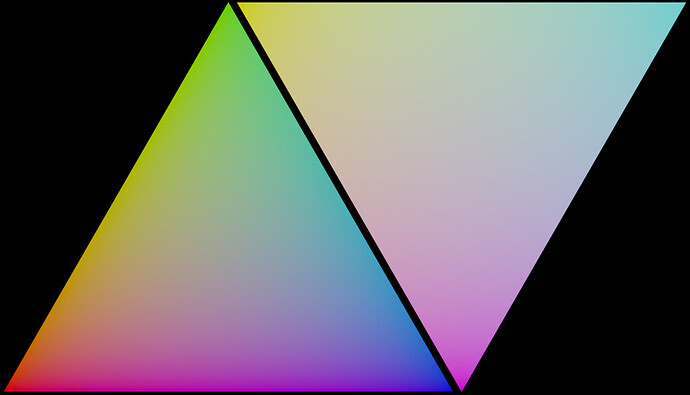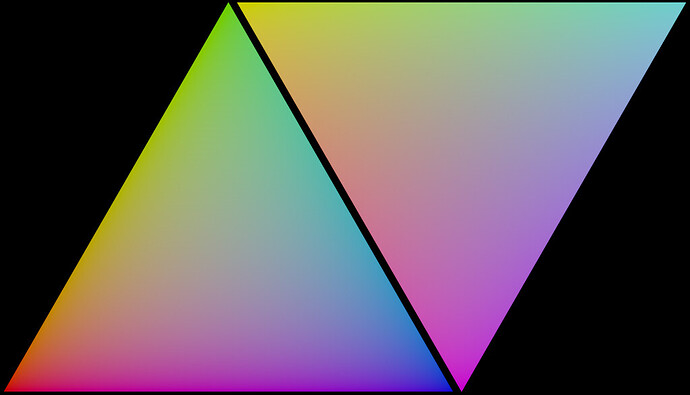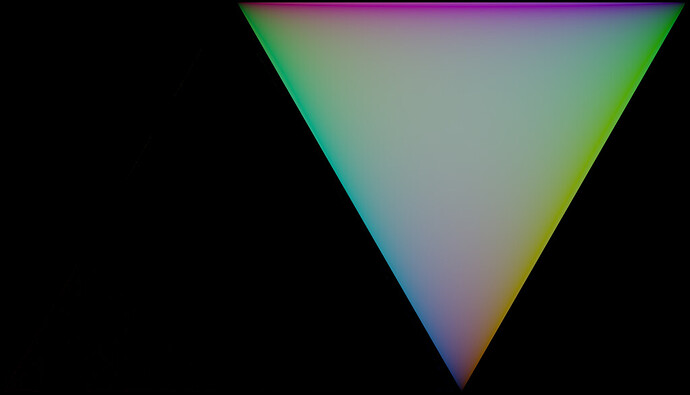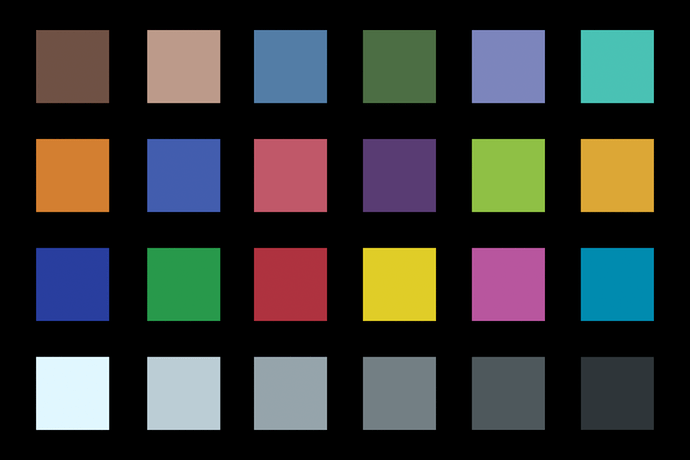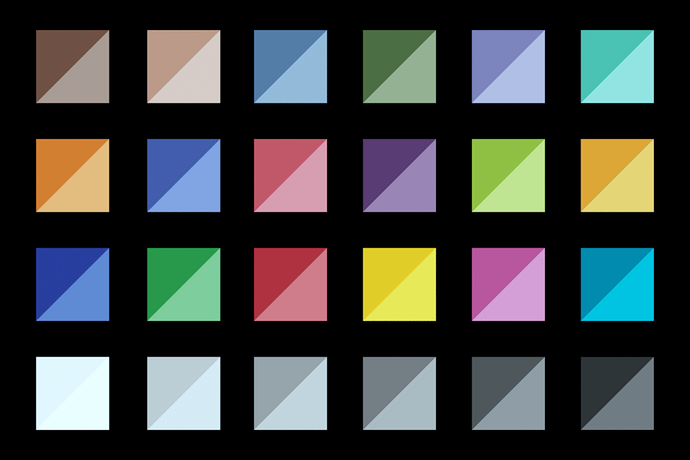Finally, I got some time to work on this overview-scene. I incorporated some of @kram1032’s ideas too:
There is a lot to see in this image. Every block has special meanings and there is lots of room to extend this. The complete rendering took over 4 hours, but I exaggerated a bit on the sample count and resolution, I think  . The blend and exr-render from regular Blender 2.91.0 are here: https://we.tl/t-mJfZM2IYqv. Here are some explanations:
. The blend and exr-render from regular Blender 2.91.0 are here: https://we.tl/t-mJfZM2IYqv. Here are some explanations:
A) Refractive sphere with point light at its center in a holdout see-through box. The sphere has a glossy BSDF of type GGX with a roughness gradient from 0.0 through 1.0 in counter-clock-wise direction. I wonder what the dark band is through…
B) Refractive sphere with point light at its center in a holdout see-through box. The sphere has a glossy BSDF of type Beckmann with a roughness gradient from 0.0 through 1.0 in counter-clock-wise direction. Same dark band…
C) Refractive sphere with point light at its center in a holdout see-through box. The sphere has a translucent BSDF.
D) A thin 12-sided cylinder (dodecagon) with each side a different color (Red, G, B, C, M, Y, and gray scales) one-directional transparent BSDFs which are lit from the inside by a 2500K black-body point light. The floor is diffuse white and the roof is holdout see-through. The outer wall is (non-see-through) holdout. Thus, the colors you see are the single-scatter spectrum of the point-light in the center, surrounded by the spectra of each of the transparent transmission colors.
E) Same as D, but 6500K.
F) Mirror-surface tubes with white emitter at the north-end and holdout at the south-end. A see-through slit allows us to see its internals, but light cannot escape. The volume is a scattering-only white of density 5, 10, 20, 40, and 80 respectively. The mirror-surface extends each tube its sides to infinite west-east width and top-bottom height, such that we effectively render an infinite wide/high slab of finite thickness (north-south) where we observe the amount of light at each depth-step.
G) Same as F, but with constant density 10 and anisotropies -1, -0.5, 0.0, +0.5, and +1.0.
H) Same tubes as F, but no volumetric BSDF and just simple red (0.5, 0.0, 0.0), green, and blue diffuse surface instead of the mirror, hence not infinite slabs. Towards the right, these should merely show not only darker- but also higher saturated colors in Spectral-Cycles.
I) skipped for readability.
J) Integrating spheres with small see-through hold at the top and an equally sized diffuse white patch at the bottom. Inside, a white point-light is included behind a baffle. Rest of the surface is diffuse red, green, or blue like at H. (The holes should show homogeneous color, but don’t. There is something wrong here! The spheres just may be too small since those at O through U are fine)
K) Same tubes H, but with opposite colors in RGB-space - dunno, seemed logical to include.
L) Same spheres J, but with opposite colors in RGB-space - dunno, seemed logical to include.
M) Same spheres as with J, but its surface materials are achromatic diffuse BSDF stepping from 1/8 brightness at the north-end to 7/8 brightness at the south-end. The hole and white patch are a bit wider. The color from the central opening should be analytically calculable from the surface brightnesses. You can just see the very bright white dots at the edge of the openings which are the point-light sources (it is of no concern to the calculations, it is just annoying and the openings should be a little smaller to avoid this).
N) Same spheres as with M, but surface materials are achromatic glossy Beckmann BSDFs with 0.8 brightness and roughness from 0.0 at the north-end and 1.0 at the south-end. The color form the central opening should be the same for all due to the energy-conservation requirement on the surface BSDF.
O) From north-to-south: teardrop and integrating sphere having the same anisotropic Beckmann BSDF with roughness 0.3, then an integrating sphere and teardrop with same BSDF but isotropic instead. The teardrops are simple bulbous convex (?) shapes.
P) Same as O, but with GGX BSDF.
Q) Same as O, but with Ashikhmin-Shirley BSDF.
R) Same as O, but with MultiScatter-GGX BSDF.
S) Same as O, but with Glossy Toon BSDF.
T) Same as O, but with Diffuse Toon BSDF.
U) Same as O, but with Diffuse BSDF.
@smilebags: is this a useful progression?
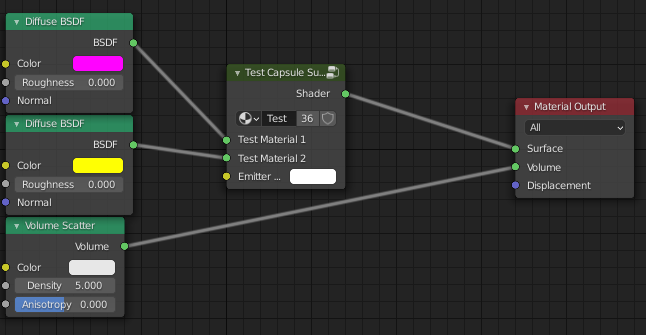





 , I have also continued along the idea of the node group, but didn’t get around creating a full grid of test-tubes. Please go wild on the volumetric things
, I have also continued along the idea of the node group, but didn’t get around creating a full grid of test-tubes. Please go wild on the volumetric things  , while I will focus on an overview-scene. I’ll include your modifications in my design if that is okay with you (albeit not an entire grid). I have some other tricks up my sleeve for various shader types, so I’ll provide a series of updates these coming days.
, while I will focus on an overview-scene. I’ll include your modifications in my design if that is okay with you (albeit not an entire grid). I have some other tricks up my sleeve for various shader types, so I’ll provide a series of updates these coming days.